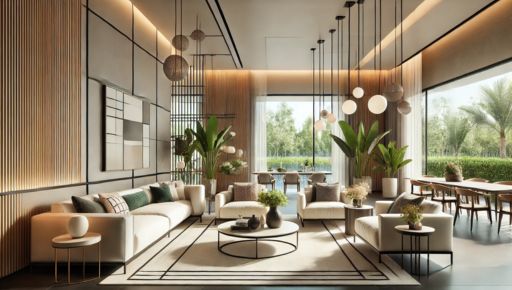Introduction to Home Design
When it comes to creating a space that is both functional and beautiful, home design plays a crucial role. Whether you’re moving into a new home or looking to refresh your current space, the right design can transform your living environment. In this article, we’ll explore essential tips and trends in home design to help you build the perfect space that fits your style and needs.
Understanding the Importance of Home Design
Home design is much more than just selecting furniture or choosing wall colors; it’s about creating a cohesive flow between the space, furniture, colors, and overall ambiance. Good home design promotes comfort, productivity, and relaxation, while poor design can make even the most beautiful home feel disjointed. Effective home design helps maximize space, incorporates your personal style, and adapts to your lifestyle needs. Whether you prefer a minimalist look, a cozy farmhouse vibe, or modern chic, the possibilities are endless.
Choosing the Right Home Design Style
One of the first steps in home design is choosing a style that speaks to you. There are many options to choose from, each offering its own personality and charm. Some popular home design styles include:
- Modern Design: Characterized by clean lines, neutral colors, and an emphasis on simplicity. Modern design makes use of open spaces and minimalist furniture, focusing on functionality and ease of use.
- Contemporary Design: Often confused with modern design, contemporary design refers to what is currently popular in the world of home interiors. It tends to incorporate more innovative, forward-thinking designs, which may evolve over time.
- Traditional Design: This style often focuses on symmetry, rich textures, and timeless elegance. It uses classic furniture pieces, such as wooden tables and antique accents, creating a refined, warm atmosphere.
- Industrial Design: Featuring raw, unfinished materials like exposed brick, metal, and wood, industrial design creates a more rugged, urban feel that is perfect for loft-style apartments or modern homes with a touch of character.
Selecting a style is important, but it’s essential to tailor it to your space and personal preferences.
Maximizing Small Spaces with Smart Home Design
One of the biggest challenges in home design is optimizing small spaces. If you’re working with a smaller home or apartment, maximizing every inch of space is essential. Smart home design can make your space feel bigger and more functional. Some tips to achieve this include:
- Use Multifunctional Furniture: Look for pieces that can serve multiple purposes, such as sofa beds or coffee tables with storage. This will help you minimize clutter and maximize space.
- Choose Lighter Colors: Lighter shades, such as whites, creams, and pastels, can help reflect light and make a room feel more open and airy.
- Mirrors and Reflective Surfaces: Mirrors are an excellent way to create the illusion of more space. They reflect light and make rooms feel brighter and more expansive.
- Go Vertical: Make use of wall-mounted shelves and storage units to keep the floor space clear. This adds vertical storage without sacrificing space.
Home Design Trends for 2024
As we move into 2024, several home design trends are shaping the way people create their living spaces. Incorporating these trends into your home design can give your space a fresh and modern look:
- Biophilic Design: Bringing nature indoors through plants, natural materials, and large windows is a trend that continues to gain momentum. This design philosophy fosters a connection with nature, helping reduce stress and enhance well-being.
- Sustainable Design: With growing awareness about the environment, sustainable home design is more important than ever. Consider energy-efficient appliances, sustainable materials, and water-saving fixtures to make your home eco-friendly.
- Bold Colors: After years of neutral tones dominating home interiors, bold and vibrant colors are making a comeback. Accent walls, colorful furniture, and artistic designs are adding personality and excitement to spaces.
- Smart Homes: Technology continues to play a huge role in modern home design. From smart thermostats and security systems to voice-controlled lighting, integrating technology makes your home more efficient and convenient.
The Role of Lighting in Home Design
Lighting is a key component of any home design. It can enhance the mood of a room and highlight design elements that might otherwise go unnoticed. Consider the following tips to get the most out of your lighting:
- Layer Your Lighting: Combine ambient, task, and accent lighting to create a balanced and functional space.
- Use Natural Light: Incorporate as much natural light as possible through windows and glass doors. Natural light is an essential element in home design that makes spaces feel bright and welcoming.
- Add Statement Lighting Fixtures: Consider adding unique lighting fixtures, such as chandeliers or pendant lights, to create visual interest and set the tone of the room.
Conclusion
Home design is a blend of creativity and functionality. Whether you are transforming a single room or redesigning an entire home, the right design will elevate your space and create a home that reflects your personality and lifestyle. By choosing the right design style, optimizing your space, and staying on top of current trends, you can create a beautiful, comfortable environment that you’ll love to spend time in. With thoughtful planning and attention to detail, the home of your dreams is well within reach.



